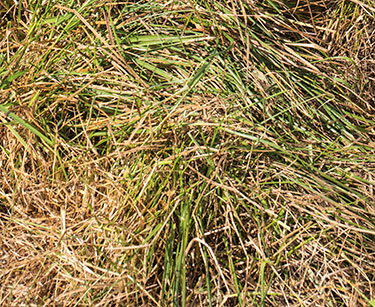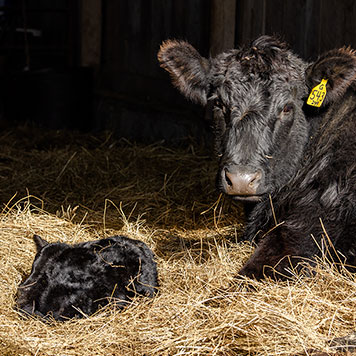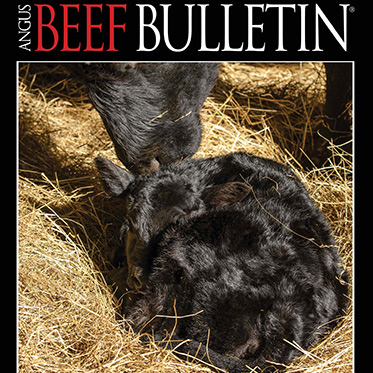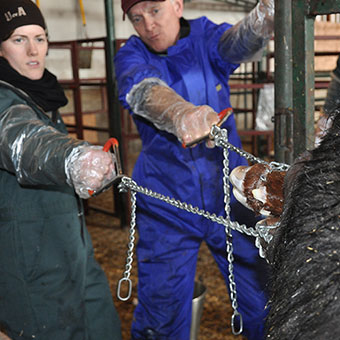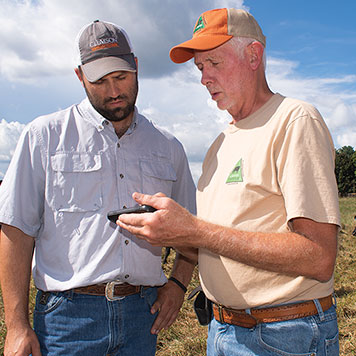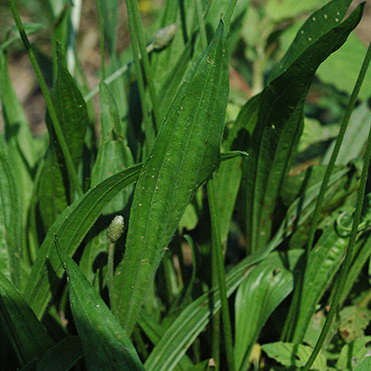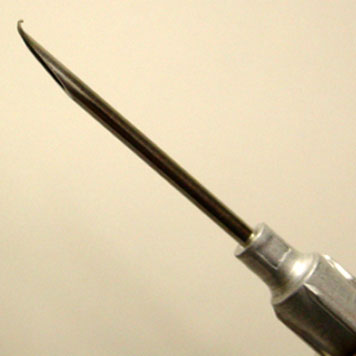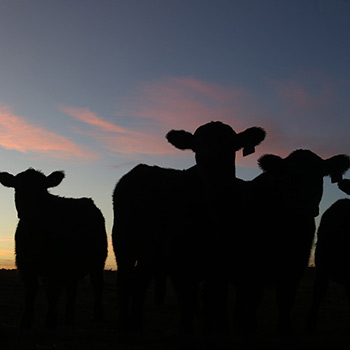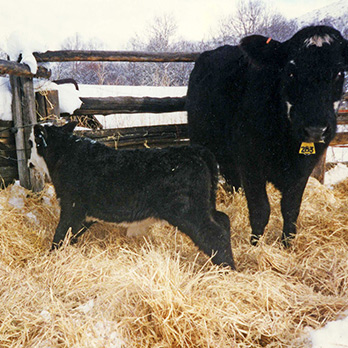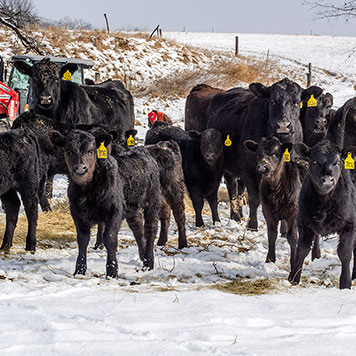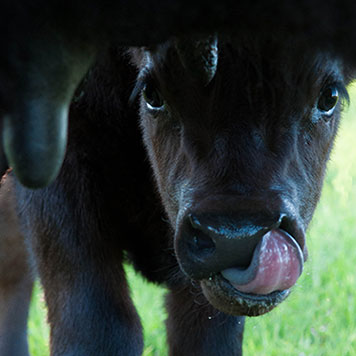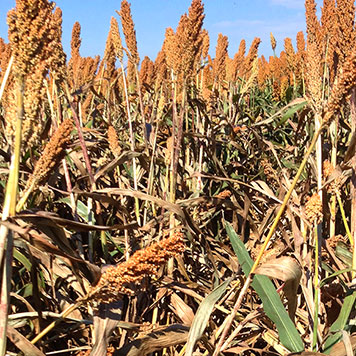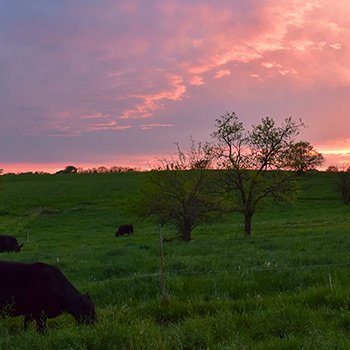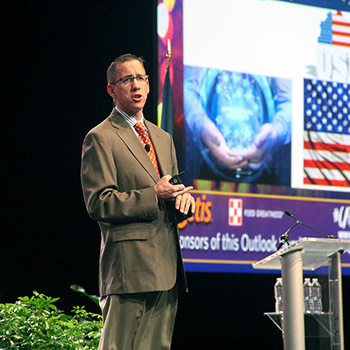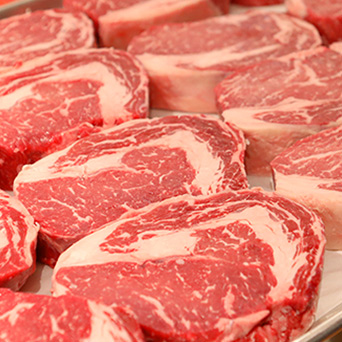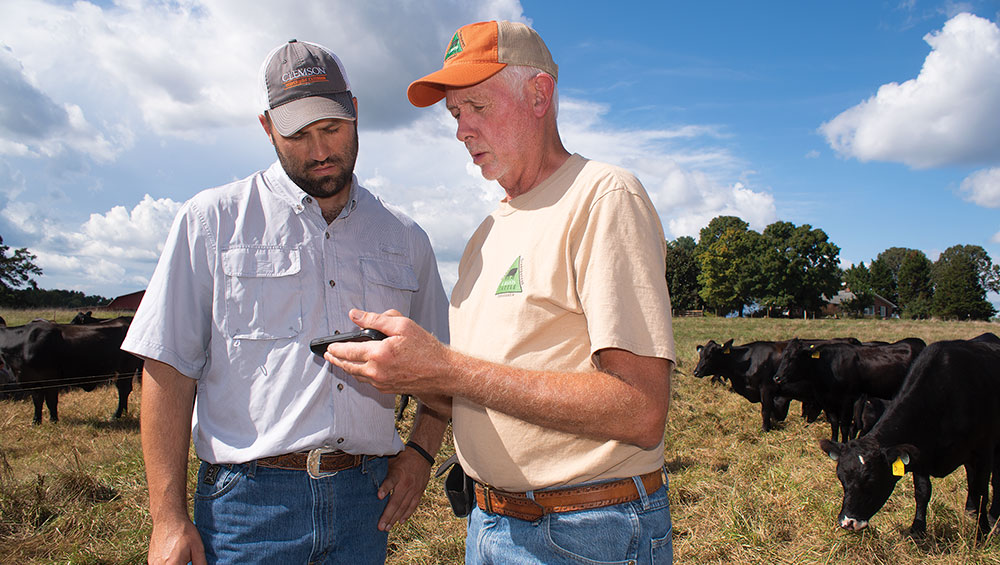
Fescue Conversion
Tools available to help convert pastures.
Above: Westminster, S.C., cattleman Joe Davis (right with Joe Burns, left) estimates his payback time in the piedmont of South Carolina is five to six years at the most, but says, “I really believe it is closer to three to four years.” |
Even with all the advantages, converting a pasture from Kentucky 31 fescue to novel endophyte fescue is neither for the cash-strapped nor the impatient. If you aren’t in a position to do all your pastures, University of Missouri State Forage Specialist Craig Roberts recommends converting 25% to novel endophyte fescue, which does not produce the toxic ergot alkaloids that causes fescue toxicosis, and using those acres for your spring-calving cows.
However, he jokes, “It is a gateway drug.”
North Carolina State University Beef Cattle and Forage Extension Specialist Matt Poore uses both Kentucky 31 and novel endophyte fescue in his family operation in Virginia.
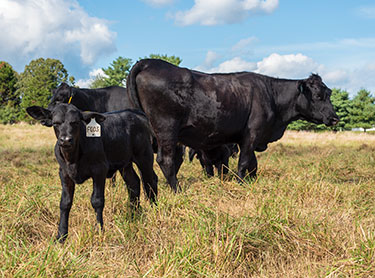 |
“Conversion to novel endophyte fescue without good management practices in herd health, managed grazing and controlled breeding is a waste of money,” says Joe Davis. |
“The payback for renovating the 25% of your pastures that really need renovating is 1.5 years,” he says. For more than that, it depends on geography. In Missouri, the payback time is around 4.7 years, but it’s 5.5 years on the East Coast.
Westminster, S.C., cattleman Joe Davis estimates his payback time in the piedmont of South Carolina is five to six years at the most, but says, “I really believe it is closer to three to four years.”
Poore says: “If you have fescue foot in your herd, or a 75% breeding rate, it pays quicker. If you have a 95% breeding rate and no fescue foot, it takes longer to pay back.”
Matthew Burns, Clemson University beef specialist, says it is also a case of first things first.
“Producers have to be willing to do the small things right,” he says. “They need to have a defined breeding season, take soil samples and get the basics of grazing and beef management down. Those things can make a bigger impact on their operation.”
Davis agrees: “Conversion to novel endophyte fescue without good management practices in herd health, managed grazing and controlled breeding is a waste of money.”
However, Burns says, “If someone is getting started in the cattle business, or has a pasture that needs renovating, they are much better off planting novel endophyte fescue.”
Editor’s note: Read more about fescue conversion and the benefits in cattle performance in “Fescue Detox” in the April Angus Beef Bulletin. Subscribe at www.angus.org/ABBsubscribe.
